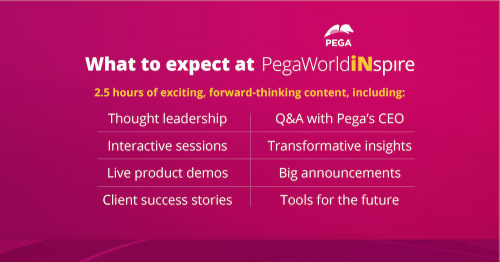How four brands are leveraging technology to help them build better relationships with their customers
April 21, 2021
Creating outstanding CX from the top-down and bottom-up
April 28, 2021Today’s interview is with Michael Solomon, PhD who is Professor of Marketing in the Haub School of Business at Saint Joseph’s University in Philadelphia and the author of one of THE books, if not THE original book, on consumer behaviour. He joins us today not to talk about that book but a new one that he has just published called The New Chameleons: How to Connect with Consumers Who Defy Categorization, the difference between horizontal and vertical thinking, whether marketers really know their customers, whether there is a myth around the idea that customers want choice and other ideas that will help you build a better understanding of your customers.
This interview follows on from my recent interview – What the democratisation of artificial intelligence (AI) means for customer experience – Interview with Matthew Nolan of Pega — and is number 385 in the series of interviews with authors and business leaders that are doing great things, providing valuable insights, helping businesses innovate and delivering great service and experience to both their customers and their employees.
NOTE: A big thank you goes out to the folks at Pega for sponsoring my podcast this month.
It’s almost time for PegaWorld iNspire, the annual conference from Pegasystems. Join them online for free on May 4 from 9 a.m. – 11:30 a.m. Eastern Time (that’s 2 p.m. – 4:30 p.m. UK time) to learn how the world’s most impactful companies are driving digital transformation. They’ll have compelling keynotes, demos, and case studies in a highly interactive virtual format and a few surprises as well. Go to www.pegaworld.com to register for free and check out the full agenda. I’ve attended the last several PegaWorlds in person, and virtually, and I can’t recommend it highly enough, so go register today! That’s www.pegaworld.com
Here’s the highlights of my chat with Michael:
- One of the bedrock assumptions that we make is that traditional market segmentation is a great idea.
- But, in many cases, it no longer makes sense.
- Customers are like chameleons and chameleons change their coloration as they encounter new environments and there’s no limit on the number of times that they’ll do that.
- We pick and choose the brands that make sense to us, that speak to us and that really resonate with us because they’re part of our identities.
- We’re recognizing that people aren’t just waking up one morning and deciding to buy something. They have gone through a process. And, often that process is part of some project that they’re working on.
- Companies need to keep in mind that their customers are chameleons and may change from one hour to the next.
- We need to think horizontally and vertically when we think about customers.
- When people are pursuing a particular identity the way they’re doing that is looking across verticals to create what we might think of as an ensemble or a product constellation – a set of products that socially rather than functionally go together. And, if you start thinking like your consumers and thinking horizontally, it opens up a lot of interesting opportunities.
- We have to understand is that each customer is actually many customers.
- The assumption is that the more choice you give people, the better they are. In an abstract sense, that’s true. We like to have choice. But, in reality, it’s really more curvilinear. That is, you reach an inflection point where you can actually give people too much choice. And so, you can reach a point where there are so many different options our brains are really not able to process all that information. As a result, we end up doing or choosing nothing or making sub-optimal choices.
- The key is finding that inflection point where you are giving them choice but not too much.
- For example, in the automotive industry, a few years ago companies like Toyota were giving customers too much choice when they bought a car. Now, you’re more likely to see them offered a package which comes with a certain kind of upholstery and certain capabilities etc.
- In Western Europe and the U. S., if you look at the number of hours that young adults spend looking at a screen on average per day that number is approaching 11 hours per day. And, it’s gone up rapidly over the last 5-10 years.
- That means, every company or brand has to offer an online experience.
- The future and present is multi channel.
- Lego is a great example of a brand that revitalised themselves by relying on their customers to help guide them out of the mess they found themselves in. They found that their customers are the best source of ideas about what they should be doing with new Lego products. They developed a co-creator model where they have at least 10,000 members (customers) who help them with product development.
- One of the best things that you can do to catch up is to acknowledge that your best resources are your employees and your customers. In both cases they are the ones who have their ear to the ground and really understand what’s going on out there. To exclude that kind of input early in the process is a crime.
- The IKEA effect is the idea that we are more engaged with something if we helped to produce it.
- We need to start talking about share of mind. Share of wallet is very nice but that can come later.
- Michael’s Punk CX word: Authentic
- Michael’s Punk CX brand: Zappos.
About Michael
 Michael “wrote the book” on understanding consumers. Literally. Hundreds of thousands of business students have learned about Marketing from his books including Consumer Behavior: Buying, Having, and Being — the most widely used book on the subject in the world.
Michael “wrote the book” on understanding consumers. Literally. Hundreds of thousands of business students have learned about Marketing from his books including Consumer Behavior: Buying, Having, and Being — the most widely used book on the subject in the world.
Michael’s mantra: We don’t buy products because of what they do. We buy them because of what they mean. He advises global clients on marketing strategies to make them more consumer-centric, and he is currently directing Nielsen’s revamp of its global Brand Health Model. Michael is a Contributor at Forbes.com, where he writes about issues related to consumer behavior, marketing and retailing. His articles have been cited over 30,000 times, and he is frequently quoted in publications such as The New York Times, The Washington Post, Time, USA Today and Adweek. His newest book, The New Chameleons: Connecting with Consumers Who Defy Categorization, was published globally by Kogan Page in February 2021.
As a Professor of Marketing (in the Haub School of Business at Saint Joseph’s University in Philadelphia, U.S.A.), a sought-after keynote speaker, and an industry consultant, Michael combines cutting-edge academic theory with actionable real-world strategies. He helps managers get inside the heads of their customers so they can anticipate and satisfy their deepest and most pressing needs – today and tomorrow. An executive at Subaru said it best: “The man is a scholar who is current and street-wise.”
You can found out more about Michael at his faculty page here and at his own site here.
Don’t forget to check out his book: The New Chameleons: How to Connect with Consumers Who Defy Categorization, connect with him on LinkedIn here and say Hi to him on Twitter @mikesolo.
Image by enriquelopezgarre from Pixabay





